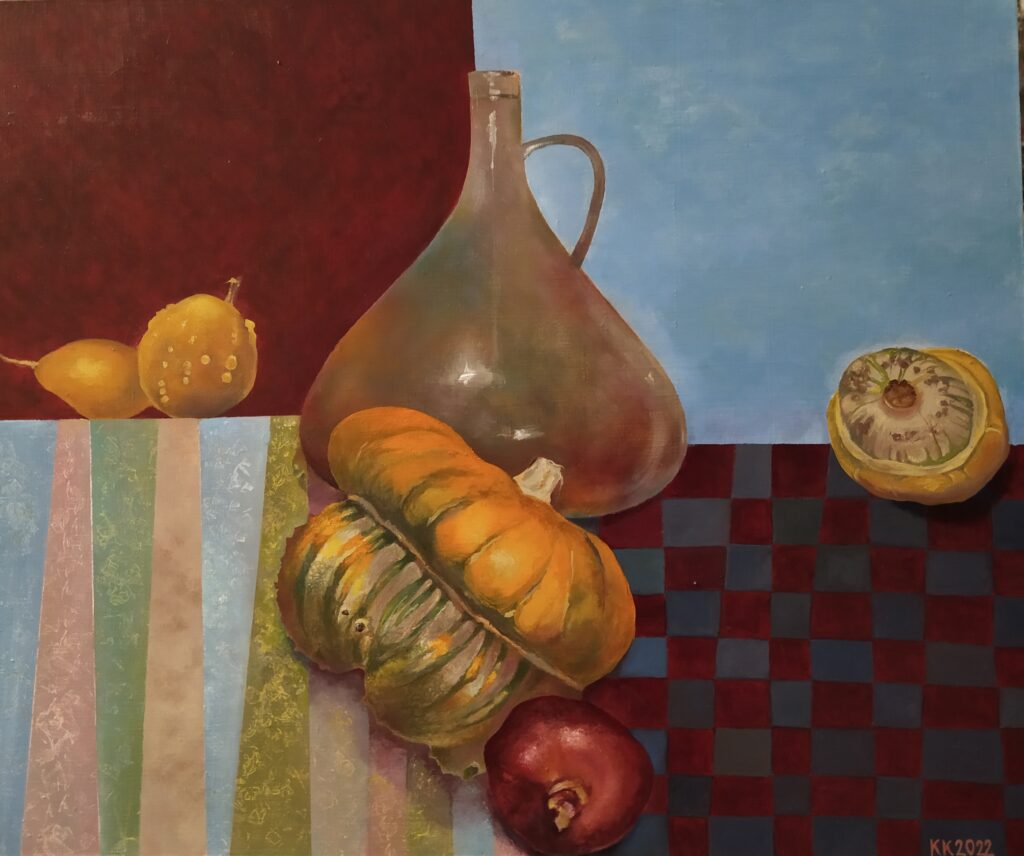Real and Unreal (2022) is an oil painting on canvas which successfully explores the concept of opposites. The still life consists of objects that have been halved (as in the case of the pumpkin and the fruit in the centre right) and in an imperfect form (the left fruit has warts and other imperfections).

The table and the tablecloth are not symmetrical at all, as you can see that the glass jug separates them, and one side is higher than the other. Another opposite you can notice is that the walls and the tablecloths are contrasting colours on the opposite sides. This helps to draw the viewer’s eye to the centre, where the jug is the balancing object within the whole composition and brings the viewer down to the unusual pumpkin.
The work itself feels its guidance through each fruit, and the contrasts between them create a form of meditative space. There are the more ‘typical’ still-life elements and the unreal, different parts of the fruit that are not typical. The scene in the painting itself cannot exist, so it questions the viewer to compare themselves to the objects of imperfection and that everything on the outside that is perfect may be imperfect inside.

The Fifth Element (2023) explores humanity as the fifth main element. The painting merges Earth, fire, and water into one, with humanity controlling these elements. Yet the air is contrasted against the figure rather than with the figure.
The ocean in the background refers to water and rocks with Earth. At the same time, the human itself is a void of celestial material, the planets, which puts all these elements, apart from air, into the composition of the human. Humanity, being the fifth element, is not in control of these elements but is rather required to balance them while air balances humanity.

Day and Night (2022) is split between system and freedom. The left side, wearing medieval armour, symbolises the system, while the right depicts freedom.
The left side of the painting explores how the system has structured people to conform to society and be restrictive. The armour presents this restriction, which holds the person in place and does not let them escape from it. Meanwhile, the right side of the painting has a confident figure exhaling cigarette smoke into celestial objects. This suggests that the figure is not attached to the Earth and does not have to conform to the system.
The right-side figure is almost as though they are ethereal and their facial expression is of contentment. While the left-side figure is surrounded by a brick wall with its paint peeling off; they seem emotionless within the metal armor. Contextually, the medieval armor could be a symbolism of duty to the country and are defensive of the system that controls them.
